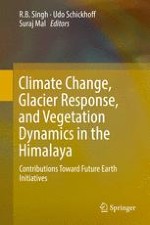2016 | OriginalPaper | Chapter
14. Understanding Factors Influencing Hydro-climatic Risk and Human Vulnerability: Application of Systems Thinking in the Himalayan Region
Authors : Gourav Misra, Harekrishna Misra, Christopher A. Scott
Published in: Climate Change, Glacier Response, and Vegetation Dynamics in the Himalaya
Publisher: Springer International Publishing
Activate our intelligent search to find suitable subject content or patents.
Select sections of text to find matching patents with Artificial Intelligence. powered by
Select sections of text to find additional relevant content using AI-assisted search. powered by
